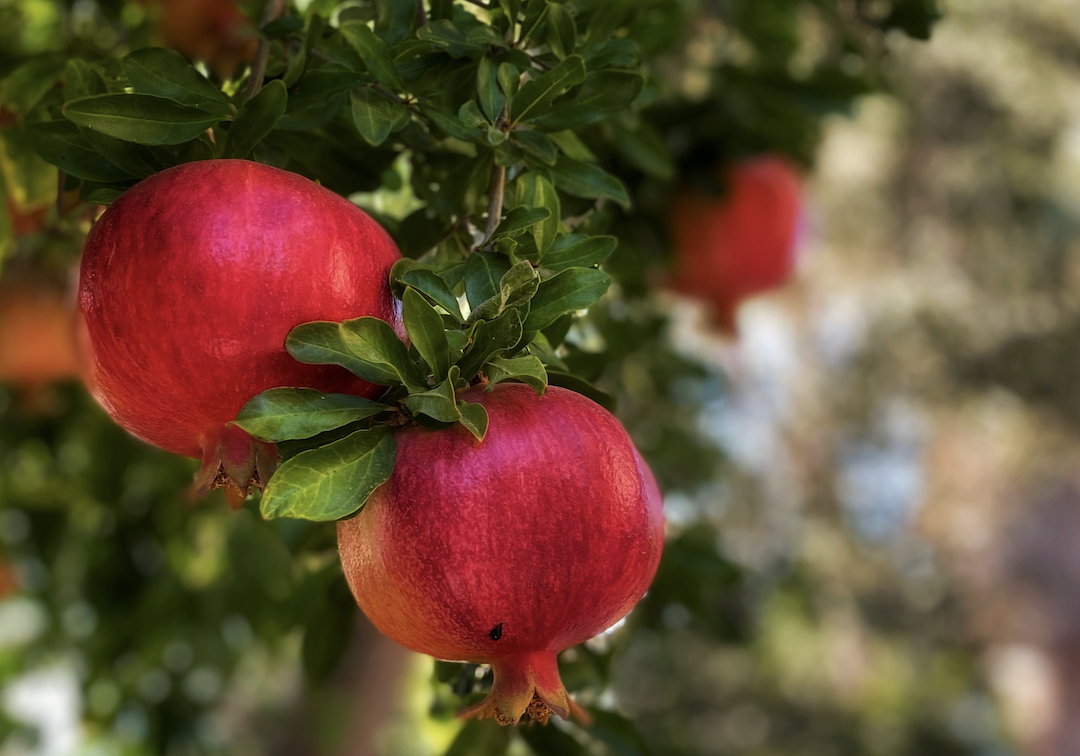A review led by AgriFutures Australia reveals how the pomegranate industry could rapidly expand with a few simple changes.
The report, titled the Australian Pomegranate Management Guide, provides insight into the potential of this small industry. Experts believe that greater investment and research could lead to new opportunities both domestically and internationally.
The red superfood
Currently, the Australian pomegranate industry is worth $10.4 million, made up of around 275,000 mature trees.
Pomegranates are a popular fruit due to their many health benefits, including anti-inflammatory and antibacterial properties. They are high in antioxidants, fibres and vitamins C and K. Aside from selling the fruits themselves, growers can also appeal to the Aussie market through juices, read-to-eat and frozen arils and nutraceuticals.

A pomegranate tree
As a relatively small industry, issues such as practice standards, quality control and market development are constantly being debated. However, the market potential continues to grow. In America, the pomegranate juice market expanded by 750% between 2001 and 2005 into a US $66 million industry. According to the Australian Pomegranate Industry Strategic Plan 2021-2026, global pomegranate demand doubled every three years in the 2000s, opening up significant opportunities for Australian producers, especially when it comes to exports as a counter-seasonal product.
Guiding the growers
AgriFutures Australia recently funded the Australian Pomegranate Management Guide. It was produced by RMCG, an environmental and agriculture consultancy group, with insight from pomegranate producers across the country.
Dr Kristen Stirling, author of the paper, says the research will be useful for growers looking to begin or upscale their production.
“The Australian Pomegranate Management Guide highlights that getting the basics right from the start is really important,” she explains.
“Pomegranates are a relatively easy fruit to produce but need to be grown in soil that drains well and in regions that receive enough sunlight.”

Experts hope the guide will be a good outline of the entire growing process. This includes the necessary resources such as soil and fertiliser, pest control, and quality maintenance after the fruit has been harvested.
“There is no ‘perfect’ way to grow pomegranates, which is why we have provided the principles of good management which producers can tailor to suit their needs,” says Dr Stirling.
“Across Australia we found a wide variety of orchard set-ups and management practices which were developed to suit the region and the producer.”
The guide has been released as part of AgriFuture’s Emerging Industries Program, which supports new and emerging industries by highlighting their potential for growth
Dr Olivia Reynolds, AgriFutures Australia Senior Manager Emerging Industries, believes the guide has the potential to support new and experienced producers.
“The guide will aid growers to optimise their farming practices, reduce environmental impacts, and improve overall efficiency and sustainability.”
For a complete guide to Australia’s emerging agricultural industries, click here.

